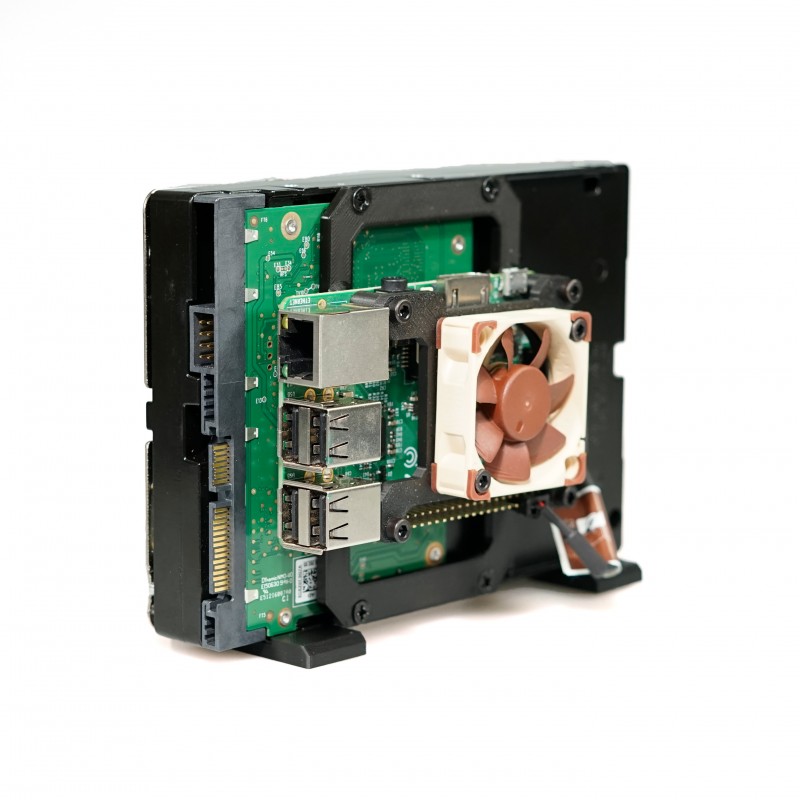

- #Mount a external hdd for raspberry pi samba how to#
- #Mount a external hdd for raspberry pi samba full#
- #Mount a external hdd for raspberry pi samba password#
So I do have samba set up like you said on the Pi: every time I need help with something on a mount point, everyone tells me I shouldn't use /mnt. I also have the /mnt/multimedia mount point pre-created on the pi (as well as on the computer) with the owner:group set to derek:derek. I prefer the UUID because I was having issues where the computer I had this on to begin with kept changing it's mind about where in the /dev family it wanted the drive to live. Not sure why now, it was years ago and I have trouble remembering what I ate for breakfast. I do have the USB drive set up to automount on the Pi in fstab: You give answers like I ask questions, lol. Usually after I post something like this, someone else will come along with a more concise answer. don't use spaces.Īnyways, hope this is helpful and not confusing. Options cannot have spaces between them or inside - not exactly true, but. If the IP isn't static, I'd make it static. Or just use the IP address for that machine. romulus/Media /mnt/Media cifs rw,credentials=/home/thefu/smb-media.pass,soft,iocharset=utf8 0 2ĭon't forget that /mnt/Media must already exist.ĭon't forget that "romulus" has to be 'ping-able' from any client. I don't mount CIFS through the fstab, I use autofs, so I don't have a nice proven example to share.
#Mount a external hdd for raspberry pi samba password#
I keep the username and password in a credentials file with 600 permissions. o rw,credentials=/home/thefu/smb-media.pass,soft,iocharset=utf8,username=$ Sudo mount -t cifs //romulus/Media $MNT_PNT \
#Mount a external hdd for raspberry pi samba full#
No fine-grained permissions possible without going full out with complex setups. Samba permissions are set at mount time and are sorta global, per mount. This is where it gets hard from a security standpoint and why NFS is better. Freakin' systemd sucks.Īssuming it is in the allowed subnet, you just need to create the mount point, and either run the mount or modify the fstab to handle mounting.

Going forward, I think it picks up normal password changes, but the userid has to be added.Īfter that's all done, restart the samba service - sudo service samba restart - and the share will be accessible to the subnets listed.
#Mount a external hdd for raspberry pi samba how to#
sudo smbpasswd -u thefu is how to accomplish that. This doesn't allow guests, so before you can access the "Media" share, a userid and password have to be setup for samba. In the part, be certain this line exists: Ubuntu 18.xx changed some things and I don't have any experience with those changes, but on earlier versions, the smb.conf (use sudoedit to edit the smb.conf file) stanza should look something like this: Samba must be installed first, then the /etc/samba/smb.conf needs to be modified to share it. Still on the Pi, now we need to tell Samba to share the specific directory. I think it is possible to use NTFS and share it, but that brings other complexities. By default, these come from the vendor formatted with NTFS almost always - like over 99% of the time they are NTFS. The file system type, ext4, is a guess, but assumes that you actually formatted the 1st partition on the USB drive to be ext4. You'd need to run sudo fdisk -l to see the correct name. The device, /dev/sda1, is just my guess at the name. The file system standards say those areas for for other purposes. For many reasons, I prefer not to leave permanent mounts under either /mnt/ or /media/, but it is your machine. If you want /mnt/multimedia to be the mount point, then sudo mkdir /mnt/multimedia is mandatory. I like to put mounts into the fstab, so they happen automatically, unless they are external devices. On the raspberry pi, a normal mount is needed, so something like The mount on the raspberry pi and the mount on the remote systems which will be accessed using SMB/CIFS.


 0 kommentar(er)
0 kommentar(er)
